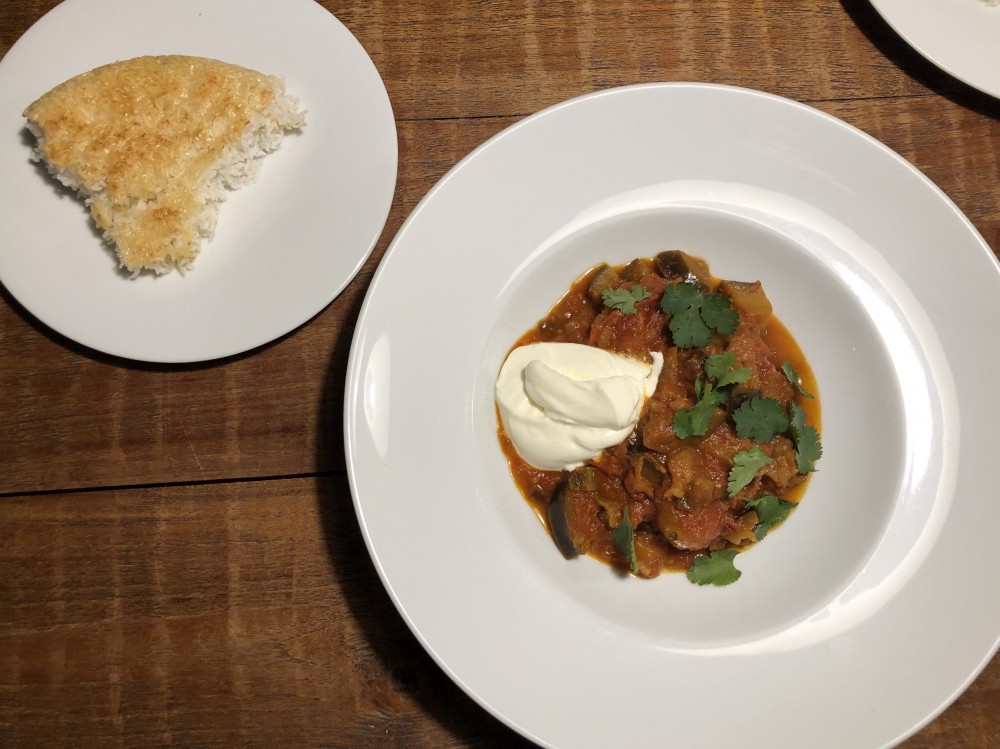Iron Chef WAYCT - What Are You Cooking Today
-
Arrowroot is way more powerful than cornstarch.
We primarily use olive oil, butter, and bacon fat if it's available. I have ghee on-hand, but can't be bothered most times and reach for the butter instead.
Here's the requisite Shepherd's Pie with the leftover pot roast, sauce, and mashed potatoes.

-
Shepperd's pies are awesome. This one looks delicious.
Another thickener is gelatin. You can just make chicken broth using leftover bones from everyday roasted chickens, and boil it down a bit, and it will ad a lot of body to any (wet) dish. Of course, it's not as powerful as cornstarch and arrowroot.
-
Delicious, @seawolf !!
Agreed @JDelage , we don't use it all too often, but we probably should save some when we make stock, which we always do with bones and vegetable fragments.
Speaking of stocks, we don't throw away vegetable or herb stems (like for onions or peppers, or thyme) and other supposed refuse, we instead throw them in an airtight bag or container and keep them in the freezer, as we also do with leftover bones. Those can then be used for stock. When we meal plan, we spend far less on groceries and we waste almost nothing. If we ever get into gardening and composting as we plan to do beyond the herbs we grow seasonally today, we will press this efficiency further still.
-
@mclaincausey I've learned how to make stock from two different chefs, and I've made my decision on how I want my stock to be after seeing two very different sides.
The first chef put anything and everything into his stock. He was very concerned with his food cost (as he should be) and wasted nothing. Onion skins, onion scraps (root, etc.), pepper remnants, carrot peels, carrots trimmings, celery leaves, etc., etc., etc., and added whatever chicken bones he could find.
The second chef used only peeled onions, peeled carrots, and cleaned celery, a carefully assembled bouquet garni, and a hefty amount of chicken bones.
Want to take a guess which one came out better?
-
Probably the inefficient and wasteful version, based on how these things usually work

-
I often will just make broth with leftovers from chickens and nothing else, but it's because I keep frozen broth in the freezer to use in any recipe that calls for it - it's "generic" broth. I also like a cup when I'm cold, with lots of pepper.
If you're making broth for something very specific, like a clear soup, you have to be deliberate…
-
Want to take a guess which one came out better?
All those weird bits and pieces add flavor…
-
Since we buy a lot of cooked rotisserie birds (c'mon, they're delicious, cheap, and convenient), which often have pathetic wings, I'm a big fan of not eating the wings and using them with the carcass in the stock. This gets you some gelatin and body in tbe broth.
-
@Chris They sure do add flavor. Bad flavor. Onion skins, peppers, carrot peels, etc. add bitter/off flavors. The old saying "shit in, shit out" applies here. If I'm going to go through all of the trouble making a stock, and ultimately making a soup or cooking with it, it had better be consistent and tasty. I wouldn't eat pepper pith and onion skins, so I'm not putting it in my stock.
@mclaincausey If you want to make good stock and not be wasteful, compost your vegetable waste and make beautiful topsoil. Our compost bin in VA turned out the most beautiful, richest soil I've ever seen. Most of it was from lawn clippings and kitchen waste (stuff that I won't put in chicken stock
 , coffee grounds, banana peels, etc.), but never any meat or dairy so it never attracted animals.
, coffee grounds, banana peels, etc.), but never any meat or dairy so it never attracted animals.@JDelage If clear soup like consommé is on the menu, a strict mire poix, bouquet garni, and an egg white raft to collect the impurities are all that stock is getting.
Sorry guys, if we start talking about food, I get pretty serious and even more opinionated than usual

-
Yep composting is on our roadmap, but we have to put in the garden first.
I definitely wouldn't use onion skin, but I don't mind the flavor of carrot peel and typically don't peel them when I eat them raw.
-
One thing to consider about the "garbage in, garbage out" maxim though: would you eat a raw potato? And plenty of animals are inedible, or would be unpleasant to eat, prior to cooking. Cooking transforms things, so I don't think it's necessarily fair to generally state that what goes into something has to be delicious or even edible before it goes in.
-
More vegan curry fun. Sweet potato, red lentils and chickpeas in what can only be described as spice bomb of a sauce utilising whole mustard and caraway seeds, whole cumin, cloves, cinnamon as well as powdered turmeric and coriander. The sweetness from the sweet potato sets it all off.

-
One thing to consider about the "garbage in, garbage out" maxim though: would you eat a raw potato? And plenty of animals are inedible, or would be unpleasant to eat, prior to cooking. Cooking transforms things, so I don't think it's necessarily fair to generally state that what goes into something has to be delicious or even edible before it goes in.
You're absolutely right, but we're talking about a classic base for countless dishes across several cuisines. Cooking does transform things, but in the case of stock (which is what we're discussing), you get out of it what you put into it. I wouldn't eat carrot peels or pepper pith before or after cooking due to their bitterness, and it doesn't add anything flavor-wise to your end product that make it worthwhile.
Don't want to take my word for it? Here's the Cook's Illustrated take on carrot peels:
https://www.cooksillustrated.com/how_tos/5864-the-importance-of-peeling-carrots
"To test whether peeling carrots has a noticeable effect on their flavor or texture, we compared batches of scrubbed unpeeled carrots with peeled carrots. We tasted the samples raw, cut into coins and glazed, and roasted in a 425-degree oven.
Although a few tasters found the unpeeled raw carrots to be earthier tasting than their stripped siblings, most were distracted by their “dusty exterior” and “bitter finish.” The results were even more clear-cut when the carrots were cooked. Tasters unanimously preferred the peel-free carrots in the glazed and roasted samples. In both cases, the skins on the unpeeled carrots became wrinkled, tough, and gritty. Their flavor was “again earthier, but not in a good way” and they weren’t particularly appealing looking. On the other hand, the peeled versions remained bright orange, tender, and sweet."
Or some deeper reading:
"Bitterness is considered as an undesirable taste of carrots. Quantitative chemical analysis of potential bitter compounds of different carrot genotypes was combined with sensory analysis in order to identify key compounds likely to be responsible for the bitterness of carrots. Eight carrot genotypes (‘Bolero’, ‘Mello Yello’, ‘Nairobi’, ‘Tornado’, ‘Purple Haze’, ‘Line 1’, ‘Line 2’, and ‘Line 3’) representing extremes in sensory-perceived odour, flavour, and taste. Potential bitter compounds like polyacetylenes, isocoumarins and phenolic acids were quantified in the peel and the corresponding peeled carrot, and their contribution to bitterness in raw carrots was analysed by sensory profiling using multivariate data analysis. Falcarindiol and a di-caffeic acid derivative were highly related to bitterness in contrast to falcarinol and other potential bitter compounds. Falcarindiol and the di-caffeic acid derivative were primarily present in the peel whereas falcarinol was almost evenly distributed in the root. Investigation of bitterness revealed that high sugar content to some extent could mask the bitter perception of carrots. As falcarinol is the most bioactive of the carrot polyacetylenes the results of the present study indicate that there is a basis for improving the health effects of raw carrots without affecting sensory quality."





